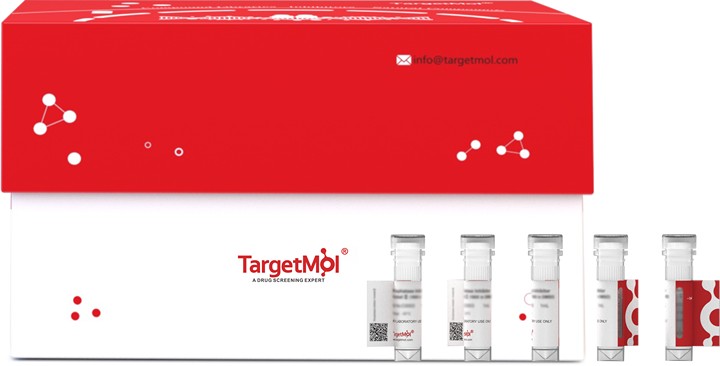Shopping Cart
Remove All Your shopping cart is currently empty
Your shopping cart is currently empty
FBXW7 Protein, Human, Recombinant (His) is expressed in E. coli expression system with N-6xHis tag. The predicted molecular weight is 83.7 kDa and the accession number is Q969H0.

| Pack Size | Price | USA Warehouse | Global Warehouse | Quantity |
|---|---|---|---|---|
| 5 μg | $276 | 20 days | 20 days | |
| 10 μg | $463 | 20 days | 20 days | |
| 20 μg | $780 | 20 days | 20 days | |
| 50 μg | $987 | 20 days | 20 days | |
| 100 μg | $1,260 | 20 days | 20 days |
| Biological Activity | Activity has not been tested. It is theoretically active, but we cannot guarantee it. If you require protein activity, we recommend choosing the eukaryotic expression version first. |
| Description | FBXW7 Protein, Human, Recombinant (His) is expressed in E. coli expression system with N-6xHis tag. The predicted molecular weight is 83.7 kDa and the accession number is Q969H0. |
| Species | Human |
| Expression System | E. coli |
| Tag | N-6xHis |
| Accession Number | Q969H0 |
| Synonyms | SEL-10,SEL10,hCdc4,FBXW7,FBX30,FBW7,F-box/WD repeat-containing protein 7,F-box protein FBX30,F-box and WD-40 domain-containing protein 7,Archipelago homolog (hAgo) |
| Amino Acid | MNQELLSVGSKRRRTGGSLRGNPSSSQVDEEQMNRVVEEEQQQQLRQQEEEHTARNGEVVGVEPRPGGQNDSQQGQLEENNNRFISVDEDSSGNQEEQEEDEEHAGEQDEEDEEEEEMDQESDDFDQSDDSSREDEHTHTNSVTNSSSIVDLPVHQLSSPFYTKTTKMKRKLDHGSEVRSFSLGKKPCKVSEYTSTTGLVPCSATPTTFGDLRAANGQGQQRRRITSVQPPTGLQEWLKMFQSWSGPEKLLALDELIDSCEPTQVKHMMQVIEPQFQRDFISLLPKELALYVLSFLEPKDLLQAAQTCRYWRILAEDNLLWREKCKEEGIDEPLHIKRRKVIKPGFIHSPWKSAYIRQHRIDTNWRRGELKSPKVLKGHDDHVITCLQFCGNRIVSGSDDNTLKVWSAVTGKCLRTLVGHTGGVWSSQMRDNIIISGSTDRTLKVWNAETGECIHTLYGHTSTVRCMHLHEKRVVSGSRDATLRVWDIETGQCLHVLMGHVAAVRCVQYDGRRVVSGAYDFMVKVWDPETETCLHTLQGHTNRVYSLQFDGIHVVSGSLDTSIRVWDVETGNCIHTLTGHQSLTSGMELKDNILVSGNADSTVKIWDIKTGQCLQTLQGPNKHQSAVTCLQFNKNFVITSSDDGTVKLWDLKTGEFIRNLVTLESGGSGGVVWRIRASNTKLVCAVGSRNGTEETKLLVLDFDVDMK |
| Construction | 1-707 aa |
| Protein Purity | > 90% as determined by SDS-PAGE. |
| Molecular Weight | 83.7 kDa (predicted) |
| Endotoxin | < 1.0 EU/μg of the protein as determined by the LAL method. |
| Formulation | Lyophilized from Tris/PBS-based buffer, 6% Trehalose, pH 8.0 |
| Reconstitution | A Certificate of Analysis (CoA) containing reconstitution instructions is included with the products. Please refer to the CoA for detailed information. |
| Stability & Storage | Lyophilized powders can be stably stored for over 12 months, while liquid products can be stored for 6-12 months at -80°C. For reconstituted protein solutions, the solution can be stored at -20°C to -80°C for at least 3 months. Please avoid multiple freeze-thaw cycles and store products in aliquots. |
| Shipping | In general, Lyophilized powders are shipping with blue ice. Solutions are shipping with dry ice. |
| Research Background | Substrate recognition component of a SCF (SKP1-CUL1-F-box protein) E3 ubiquitin-protein ligase complex which mediates the ubiquitination and subsequent proteasomal degradation of target proteins. Recognizes and binds phosphorylated sites/phosphodegrons within target proteins and thereafter bring them to the SCF complex for ubiquitination. Identified substrates include cyclin-E (CCNE1 or CCNE2), DISC1, JUN, MYC, NOTCH1 released notch intracellular domain (NICD), NFE2L1, NOTCH2, MCL1, and probably PSEN1. Acts as a negative regulator of JNK signaling by binding to phosphorylated JUN and promoting its ubiquitination and subsequent degradation. Involved in bone homeostasis and negative regulation of osteoclast differentiation. Regulates the amplitude of the cyclic expression of hepatic core clock genes and genes involved in lipid and glucose metabolism via ubiquitination and proteasomal degradation of their transcriptional repressor NR1D1; CDK1-dependent phosphorylation of NR1D1 is necessary for SCF(FBXW7)-mediated ubiquitination. Also able to promote 'Lys-63'-linked ubiquitination in response to DNA damage. The SCF(FBXW7) complex facilitates double-strand break repair following phosphorylation by ATM: phosphorylation promotes localization to sites of double-strand breaks and 'Lys-63'-linked ubiquitination of phosphorylated XRCC4, enhancing DNA non-homologous end joining. |
| Size | Quantity | Unit Price | Amount | Operation |
|---|

Copyright © 2015-2026 TargetMol Chemicals Inc. All Rights Reserved.